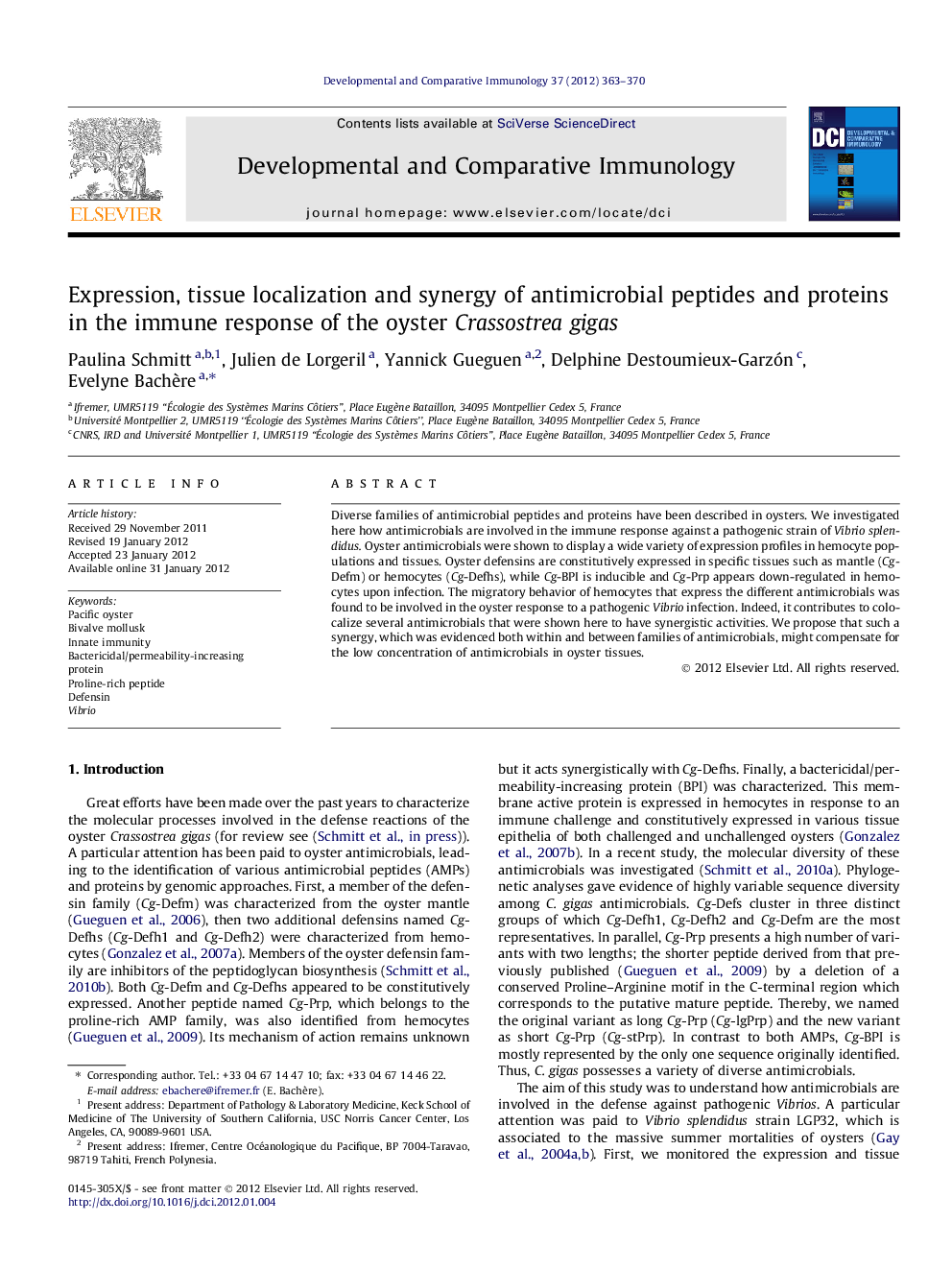| کد مقاله | کد نشریه | سال انتشار | مقاله انگلیسی | نسخه تمام متن |
|---|---|---|---|---|
| 2429572 | 1553581 | 2012 | 8 صفحه PDF | دانلود رایگان |

Diverse families of antimicrobial peptides and proteins have been described in oysters. We investigated here how antimicrobials are involved in the immune response against a pathogenic strain of Vibrio splendidus. Oyster antimicrobials were shown to display a wide variety of expression profiles in hemocyte populations and tissues. Oyster defensins are constitutively expressed in specific tissues such as mantle (Cg-Defm) or hemocytes (Cg-Defhs), while Cg-BPI is inducible and Cg-Prp appears down-regulated in hemocytes upon infection. The migratory behavior of hemocytes that express the different antimicrobials was found to be involved in the oyster response to a pathogenic Vibrio infection. Indeed, it contributes to colocalize several antimicrobials that were shown here to have synergistic activities. We propose that such a synergy, which was evidenced both within and between families of antimicrobials, might compensate for the low concentration of antimicrobials in oyster tissues.
► Oyster antimicrobials display different expression profiles in hemocytes and tissues.
► Hemocytes drive antimicrobials to tissues contributing with their colocalization.
► Oyster antimicrobials show synergistic activity in vitro.
► Synergy might compensate the low concentration of antimicrobials in oyster tissues.
Journal: Developmental & Comparative Immunology - Volume 37, Issues 3–4, July 2012, Pages 363–370